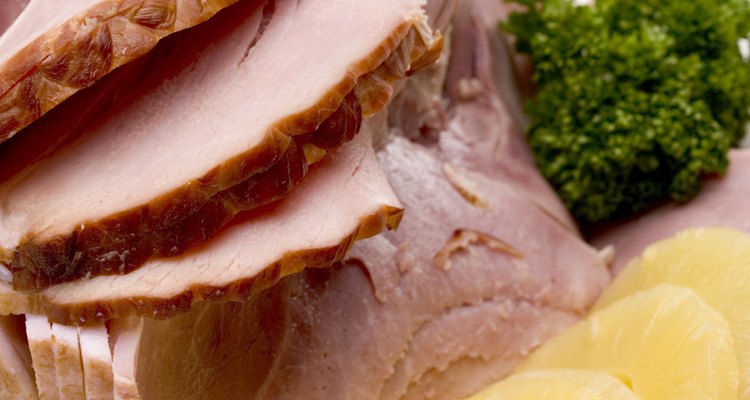
Jupiterimages/liquidlibrary/Getty Images
The variety of hams available in many large supermarkets can cause confusion for cooks unsure of how best to prepare a tender, juicy ham. For the best results, select a large, whole, precooked ham. If you cannot find a whole ham, choose a rump or butt end half ham. Either a bone-in or boneless precooked ham can give you a good result, but the bone-in varieties cook more quickly and often have more flavor. Serve with your favorite vegetables and potatoes for a hearty, filling meal.
Select a whole, fully cooked, smoked ham at your butcher or supermarket. Whole hams are not always available year-round in some areas. If this is true in your area, select a partially bone-in, large half ham. Baking a ham with the bone in it results in a more flavorful piece of meat. Leaving the bone in also helps distribute the heat throughout the ham. If desired, add visual appeal to the ham by scoring the top in a diamond pattern. Use a sharp knife to cut shallow, diagonal lines about one inch apart across the ham, then repeat the lines in the opposite direction to create diamonds. Add a touch of spice by inserting whole cloves into the cuts.
Preheat your oven to 325 degrees Fahrenheit. Arrange the shelves inside your oven so there is sufficient space for the ham to fit on the center shelf. Place a wire roasting rack in the bottom of a deep roasting pan large enough to contain the ham. Set the ham on the rack in the roasting pan and carefully insert an oven-safe thermometer into the center, meaty part of the ham. Make sure the thermometer does not touch the bone, or you will not get an accurate reading of the meat's true temperature.
Put a little water in the bottom of the roasting pan if desired. This is not required, and some cooks choose to skip this step, since the fat in the ham typically produces sufficient juices to baste the ham. Cover the pan loosely with aluminum foil. Bake the ham for 16 to 20 minutes per pound. Baste the ham with the juices from the pan once or twice during baking to keep it from drying out. The ham is safe to eat when the internal temperature reaches 140 F. Allow the ham to rest for 10 to 15 minutes after removing it from the oven to allow the juices to become evenly distributed.
Add a glaze to the ham in the final half hour of baking, if desired. Use an apricot jam glaze for an elegant company dinner or brown sugar and melted butter for a traditional family meal.
Related Articles
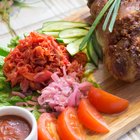
How to Smoke a Ham Shank on a Charcoal ...

The Best Way to Cook a Shank Half Ham

Tips on How to Cook a Spiral Ham
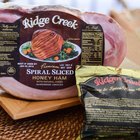
Cooking Instructions for a Ridge Creek ...

How to Carve a Spiral Cut Ham

Instructions for Baking a Smoked Ham ...

How to Julienne Ham

How Do I Roast a Picnic Ham?
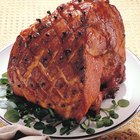
How to Freeze Cooked & Smoked Ham
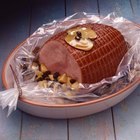
How to Cook a Daisy Ham
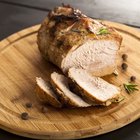
How to Cook a Tavern Ham

How to Boil Cabbage and Ham
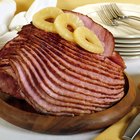
How to Cook a Filipino Ham
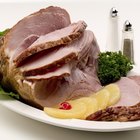
How to Cook a Ham in a Crock-Pot vs. ...
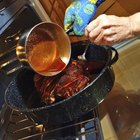
How to Fully Cook a Hickory Smoked Ham

Shank Ham Cooking Directions

How to Cook a Toupie Ham With Pineapple

How to Heat Pre-Cooked Hams
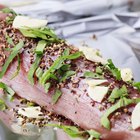
How to Cook a Picnic Shoulder in the ...

Cola for a Ham Brine
References
Tips
- Don't add the glaze until the last half hour of baking time, since the sugar in many glazes can burn if baked too long.
Writer Bio
As a national security analyst for the U.S. government, Molly Thompson wrote extensively for classified USG publications. Thompson established and runs a strategic analysis company, is a professional genealogist and participates in numerous community organizations.Thompson holds degrees from Wellesley and Georgetown in psychology, political science and international relations.
Photo Credits
Jupiterimages/liquidlibrary/Getty Images